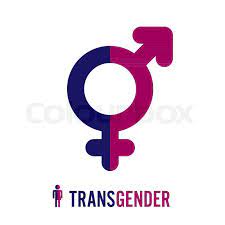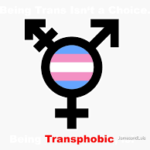Transitioning from male to female is a deeply personal and transformative journey. For many, hormone therapy serves as a critical step in aligning one’s physical appearance with their gender identity. This article will explore various aspects of transitioning, from understanding hormone therapy to the emotional shifts that accompany this change. We’ll also touch on the importance of documenting your journey through photographs and share tips on style, support resources, and celebrating milestones. Whether you’re just starting out or are well on your way, there’s something here for everyone.
Understanding Hormone Therapy for Male to Female Transition
Hormone therapy, often referred to as HRT (Hormone Replacement Therapy), is a medical treatment that helps individuals undergoing a male-to-female transition develop secondary sexual characteristics that align with their gender identity. The primary hormones used in this process are estrogen and anti-androgens. Estrogen promotes breast development, fat redistribution, and softer skin, while anti-androgens work to limit the effects of testosterone, reducing masculine traits like body hair and muscle mass. It’s essential to work closely with a healthcare provider to determine the right dosage and monitor any side effects.Estrogen Pills For WomenTrans Vs Gay
Starting hormone therapy can be a significant decision and should not be taken lightly. Before beginning HRT, it’s recommended to undergo a thorough medical evaluation that includes discussing your goals, medical history, and any potential risks. This process not only ensures that you’re making an informed choice but also helps you establish a supportive relationship with your healthcare team. Remember, transitioning is highly individual, and what works for one person may not work for another—patience and open communication are key.
What to Expect When Starting Hormones: A Beginner’s Guide
Once you begin hormone therapy, it’s normal to be excited and a bit anxious about the changes ahead. Many people experience some immediate effects, such as mood swings or increased emotional sensitivity, within the first few weeks. However, the more pronounced physical changes can take several months or even years to develop fully. Initial changes might include softer skin and a decrease in libido, which are common reactions as your body begins to adjust to the new hormones.
It’s important to have realistic expectations about the timeline and nature of changes. Every individual’s body responds differently to hormone therapy; some may notice changes more quickly than others. Consistent check-ins with your healthcare provider can help you track these changes, address any concerns, and adjust hormone levels as needed. Remember, the journey is unique to you, so embrace the process and focus on the excitement of discovering your evolving self.
Physical Changes: How Hormones Affect Your Body Over Time
As you continue on hormone therapy, you can anticipate a variety of physical changes that occur over time. In the first few months, you may notice your skin becoming smoother and less oily, alongside some breast tissue development. As the months progress, fat redistribution often leads to a more feminine body shape, with increased fat in the hips and thighs. Muscle mass may decrease, giving way to a softer overall physique.
After a year or more on hormone therapy, many individuals see significant breast development, ranging from A to C cup sizes or beyond, depending on genetics and individual hormonal response. Other changes, such as decreased body hair and a softer facial appearance, typically develop gradually. While some changes are permanent, others can be influenced by continued hormone therapy or surgical options, depending on your desired goals. Understanding and embracing these changes can be liberating as you become increasingly aligned with your identity.
Emotional Shifts: Navigating the Psychological Journey
Transitioning isn’t just a physical process; it’s also an emotional and psychological journey. Many individuals report heightened emotions during the initial stages of hormone therapy, including joy, anxiety, and even moments of sadness. These feelings are often tied to the physical changes and the broader implications of living authentically as one’s true self. It’s essential to create a support system of friends, family, or mental health professionals to help navigate these emotional fluctuations.
Some individuals may also experience a sense of liberation and euphoria as they start to see changes in their bodies and feel more comfortable in their skin. Journaling or participating in support groups can be beneficial for processing these emotions. Remember, it’s completely normal to have ups and downs, and seeking professional help when needed can make a significant difference in your overall well-being throughout the transition process.
Documenting Your Journey: The Role of Pictures in Transition
Capturing your transition through photographs can be a powerful way to document your journey and reflect on the changes you’ve undergone. Many people choose to take regular pictures to visually track their progress, from pre-transition to various stages along the way. These images can serve as a source of motivation and celebration, showcasing the physical and emotional growth you experience over time.
Sharing your photos on social media or with supportive communities can also foster connection with others who are on similar journeys. It’s essential to approach this aspect with thoughtfulness, ensuring you’re comfortable with what you share online. Remember, your transition is unique, and it’s about you—so focus on what feels right for you rather than comparing your journey to others.
Clothing and Style: Finding Your Feminine Expression
Exploring clothing and personal style can be one of the most exciting aspects of transitioning. As you begin to embrace your femininity, experimenting with different styles can help you find what feels authentic to you. Many individuals find joy in shopping for dresses, skirts, and other traditionally feminine pieces that express their identity. Take your time to explore various clothing options, and don’t hesitate to try on different looks to see what resonates with you.
Additionally, consider seeking advice from friends or community members who have experience in this area. Online forums and local LGBTQ+ groups can provide valuable insights and support as you refine your style. Remember, there are no hard and fast rules—fashion is ultimately about self-expression, so wear what makes you feel fabulous and confident!
Resources for Support: Connecting with the Trans Community
Finding a supportive community can be incredibly beneficial during your transition. There are many resources available, including local support groups, online forums, and social media networks specifically for transgender individuals. Organizations such as PFLAG, the Trevor Project, and GLAAD offer valuable resources and information for those navigating their transition, as well as ways to connect with others who understand the journey.
Consider reaching out to local LGBTQ+ centers, where you can meet like-minded individuals and participate in events or workshops. These connections can provide both emotional and practical support, helping you feel less isolated during your transition. Remember, you’re not alone; countless others are on similar paths and can offer guidance, encouragement, and friendship.
Celebrating Milestones: Sharing Your Progress with Others
Throughout your transition, celebrating milestones can enhance your sense of achievement and self-acceptance. Whether it’s the first time you feel comfortable wearing a dress or reaching a significant anniversary of being on hormones, acknowledging these moments can be empowering. You might choose to share these milestones with friends, family, or your online community, allowing others to join in your joy and support your journey.
Creating your own personal rituals to honor these achievements can also be fulfilling. Whether it’s treating yourself to a small gift, sharing a special meal with loved ones, or simply reflecting on your progress in a journal, these acts of celebration can reinforce your sense of identity and purpose. Every step forward, no matter how small, is worth celebrating as you embrace your authentic self.
Transitioning from male to female is an empowering journey filled with growth, discovery, and challenges along the way. From understanding hormone therapy to celebrating your milestones, each aspect contributes to your unique experience. Remember to lean on your community, document your progress, and embrace who you are as you navigate this incredible transformation. Your journey is personal, and there’s no right or wrong way to do it—what matters most is that you feel authentic and true to yourself. Embrace your path, and enjoy every moment of becoming the person you wish to be!

